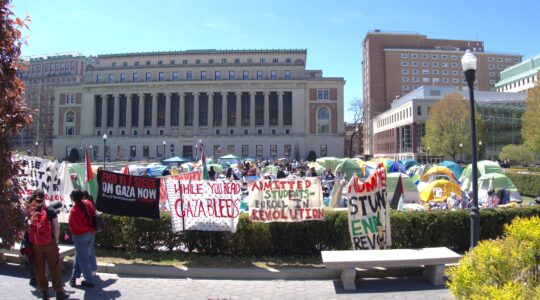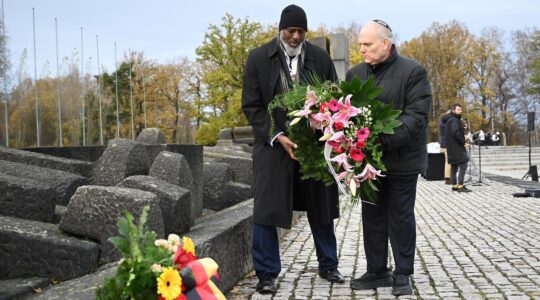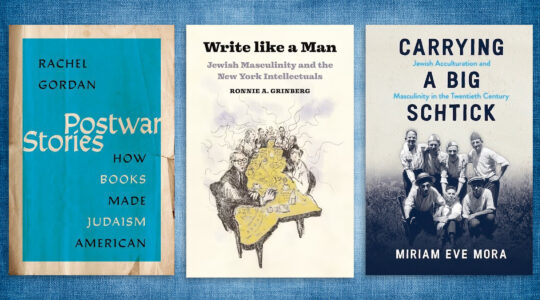For 30 years or more my involvement with people with disabilities has had a focus on intellectual disability. I found it off-putting that the primary symbol of disability has been a wheelchair. I naively thought that there were few remaining issues for people with physical disabilities. In the lead up to Rosh Hashana and over the chagim I have had a reality check.
During this time, I have spent considerable time with a person who was able-bodied until about 2 years ago. At that point, seemingly out of the blue, she lost the use of her leg and has had to work out how to navigate a world designed for those who can walk unaided. And she has had to do this with borrowed equipment not designed for her specific needs. Nonetheless, she is liberated by being able to access a wheelchair, for this offers the freedom to get around her house. She has had her car adjusted so that she can drive with the working limb, and this, too, has offered access to the self-determination that we take for granted.
As a mother of a bevvy of pre-Bar/Batmitzvah children, this young woman tells me that her biggest concern is her ability to function in this primary role. Her concern is that her physical disability comes with both pain and brain fog. It also comes with numerous medical appointments that she finds exhausting. She can’t manage everything in the kitchen as she can’t reach much of the paraphernalia she needs. She can’t put her children to bed or supervise teeth cleaning, because the bedrooms and bathrooms are up a flight of stairs she cannot climb. And she can’t even physically access much of the school her children attend. Every little thing is complicated and becomes a big thing. Like having a shower – she can’t get into her bathroom and access the shower. Washing is therefore a major operation much more complicated than it is for those of us who can walk.
But it is the on-going responses of people around her that is the greatest shock. The people who are no longer friends – who just stopped ringing when hospital extended beyond a few days. The people who cross the road to avoid saying good Shabbes. The people who actively avoid eye-contact. The vast majority of people who are unwilling to put themselves out one tiny bit – by changing a venue, by allowing extra time, by helping with transport – and do not feel responsible when the person using the wheelchair is socially isolated.
In the late 1980s, an English women Jenny Morris, who was a significant political activist, lost the use of her legs by jumping from a low wall in her garden. She wrote a book called Pride Against Prejudice: Transforming Attitudes to Disability in which she describes the process by which she was slowly but surely excluded by the world that had embraced her moments earlier. As a paraplegic she was no longer worthy of being a political player and her colleagues had suddenly found her opinions to be unworthy of consideration. She moved from being entitled to self-determination to being expected to subjugate herself to all the able-bodied people around her. I thought this was a matter for the past.
Our society adopts one of 2 primary attitudes to people with disabilities. The first is that people with disabilities are objects of pity. Their plight is tragic and ‘they’ exist so that ‘we’ can have the opportunity to do tzedakah. As non-actors, people with disabilities should be grateful for our good works and should be happy to be subjects of our mitzvah projects. This attitude is prevalent. But it is an attitude that allows ‘us’ to take no responsibility for the way in which it is the society that is disabling. The most basic environments of exclusion are physical buildings – synagogues, community buildings and mikvot (ritual baths).
The second attitude to people with disabilities is that they are malingerers and a drain on society. We know this because there are plenty of people with physical disabilities who get on with it. They join sports teams and become Paralympians. Or they work hard and one day just get up and walk out of the wheelchair. Everyone has a choice, so we shouldn’t be concerned with those who insist on, for example, not walking.
Yet all this is the opposite to what we are taught in Parshat Bereishit – the first Torah reading for the year. In the beginning, we are taught about the nature of the being ‘man’, who was the final masterpiece of God’s creation. In Genesis 1:27 we are told:
God made man in His own image;
in the image of God He created him;
male and female He created them.
Man was made from the dust and the breath of God. This results in each of us having a soul, in Hebrew Neshama, a spark of the Divine. Beyond this link with God, however, is another fundamental feature of Man. We are made in God’s image. The use of the plural and the repetition is to emphasize that we are all, without distinction, a reflection of God in the essence of our being.
Support the New York Jewish Week
Our nonprofit newsroom depends on readers like you. Make a donation now to support independent Jewish journalism in New York.
Given how different we are from each other – variety being on a range of axis: language, culture, gender, race, ability, appearance, intelligence/IQ, material possessions, socio-economic position, culture, age etc – the fact that we are all created in God’s image both unifies us and is evidence that God loves diversity. No feature or characteristic makes us less or more important; we are each of fundamental importance independent of social judgment. A person with one leg or a hunchback, a person who is a genius or a person with an intellectual disability, an ugly or beautiful person in our eyes – all are a reflection of God.
We are morally the equivalent of each other– different yet equal; the same yet distinct. The shape of our body and the sharpness of our minds are totally irrelevant. People with disabilities are equally valuable, equally important, equally entitled to share in the benefits of society. None of us is derived from an alien source – we can all trace our ancestry to Adam. No matter how disabled or different, or healthy or unwell – this diverse human experience is the an equal manifestation of God. None are superior. None are inferior.
The Jerusalem Talmud (Nedarim 9:4) records a debate between Rabbi Akiva and Rabbi Ben Azzai. Taking the statement “Ye shall love your neighbor as yourself” from the Book of Leviticus 19:18, Rabbi Akiva said “This is the major principle of the Torah.” To this Rabbi Ben Azzai responded, “This is the book of generations of Man” (Genesis 5:1) – this is a greater principle of the Torah”. Rabbi Ben Azzai was referring to the statement that man is made in God’s image, which he considered to be even more fundamental to the practice of Judaism than the Golden Rule.
If we recall that being made in God’s image involves the inherent value and dignity of every person, and that this moral equality of people is to be reflected in every human action or endeavor, we can conclude that we all need a reality check like the one I have just had. We are culpable in disabling others – making the condition of their participation in society higher than that required of others. This is wrong. We need to meet people in the eye, equal to equal. This should not be different if the person has a disability. It might be difficult. It might be against our natural instincts that would have us shun and fear difference. But we must take responsibility to see God’s image in each other and treat each other accordingly.
Melinda Jones is an independent scholar working on a range of projects related to disability, Judaism and Jewish law. Her previous research into human rights has included books, chapters and articles about the rights of people with disabilities (in domestic and international law); free speech & racial hatred; the rights of the child; religion & the law; and feminism, gender & women’s rights. Melinda taught political science and law at Australian Universities for over 20 years.
The New York Jewish Week brings you the stories behind the headlines, keeping you connected to Jewish life in New York. Help sustain the reporting you trust by donating today.




